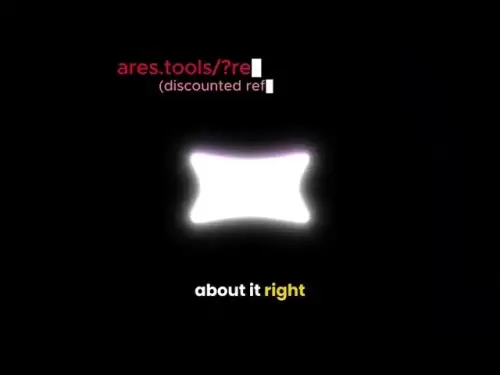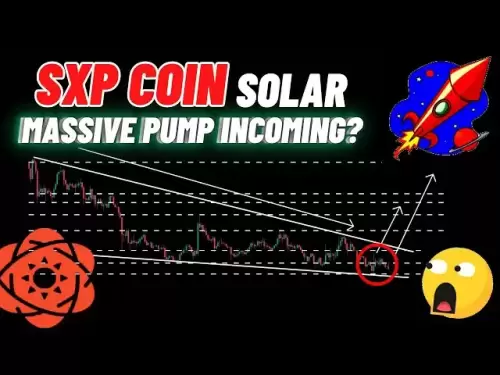-
 Bitcoin
Bitcoin $117500
2.04% -
 Ethereum
Ethereum $3759
3.02% -
 XRP
XRP $3.171
3.30% -
 Tether USDt
Tether USDt $1.000
0.03% -
 BNB
BNB $782.4
2.52% -
 Solana
Solana $187.2
5.62% -
 USDC
USDC $0.0000
0.02% -
 Dogecoin
Dogecoin $0.2380
5.26% -
 TRON
TRON $0.3175
1.07% -
 Cardano
Cardano $0.8227
4.03% -
 Hyperliquid
Hyperliquid $44.50
5.44% -
 Sui
Sui $4.020
10.07% -
 Stellar
Stellar $0.4396
6.28% -
 Chainlink
Chainlink $18.32
4.55% -
 Hedera
Hedera $0.2628
10.71% -
 Bitcoin Cash
Bitcoin Cash $554.8
4.90% -
 Avalanche
Avalanche $24.20
4.60% -
 Litecoin
Litecoin $113.7
2.31% -
 Shiba Inu
Shiba Inu $0.00001413
5.99% -
 UNUS SED LEO
UNUS SED LEO $8.984
0.11% -
 Toncoin
Toncoin $3.326
7.22% -
 Ethena USDe
Ethena USDe $1.001
0.00% -
 Uniswap
Uniswap $10.49
4.56% -
 Polkadot
Polkadot $4.092
4.02% -
 Monero
Monero $326.6
1.30% -
 Dai
Dai $1.000
-0.01% -
 Bitget Token
Bitget Token $4.570
2.49% -
 Pepe
Pepe $0.00001267
5.10% -
 Aave
Aave $297.3
3.10% -
 Cronos
Cronos $0.1344
4.10%
How to combine the three-dimensional analysis of volume and price to identify the golden buying point of breakthrough and retracement?
Use three-dimensional analysis to pinpoint golden buying points in crypto by monitoring price, volume, and time during breakouts and retracements.
Jun 03, 2025 at 11:42 pm
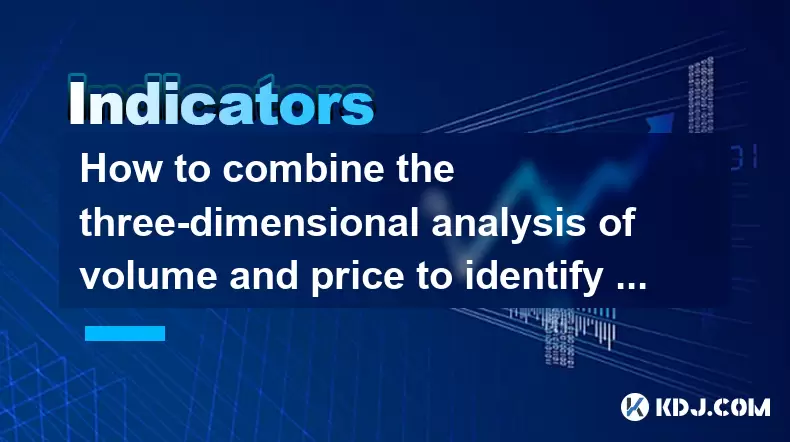
In the dynamic world of cryptocurrencies, identifying the optimal buying points is crucial for maximizing profits and minimizing risks. One effective method to achieve this is by combining three-dimensional analysis of volume and price to pinpoint the golden buying points during breakouts and retracements. This article will delve into how to use this approach to enhance your trading strategies.
Understanding Three-Dimensional Analysis
Three-dimensional analysis in the context of cryptocurrency trading involves examining price, volume, and time simultaneously. This method provides a more comprehensive view of market movements compared to traditional two-dimensional analysis, which typically focuses on price and volume alone. By incorporating time, traders can better understand the momentum and sustainability of price movements.
To conduct a three-dimensional analysis, traders need to look at:
- Price: The actual value of the cryptocurrency at any given point.
- Volume: The number of units traded during a specific period.
- Time: The duration over which these transactions occur.
Identifying Breakthrough Points
Breakthroughs occur when a cryptocurrency's price moves beyond a significant resistance level, often signaling a strong bullish trend. To identify these golden buying points using three-dimensional analysis, follow these steps:
- Monitor Price Levels: Keep an eye on key resistance levels. These are the price points at which the cryptocurrency has historically struggled to move past.
- Analyze Volume: A significant increase in trading volume at the time of the breakthrough is a strong indicator of sustained momentum. High volume suggests that many traders are actively participating in the price movement.
- Consider Time: The duration of the breakthrough is crucial. A quick spike followed by a rapid decline may indicate a false breakout. Conversely, a sustained move above the resistance level over time suggests a genuine breakthrough.
Pinpointing Retracement Opportunities
Retracements occur when a cryptocurrency's price temporarily falls back after a significant rise. These periods can offer golden buying opportunities if identified correctly. Here’s how to use three-dimensional analysis to spot these moments:
- Track Price Movements: After a significant upward movement, look for a temporary decline in price. This is your retracement.
- Evaluate Volume: During a retracement, volume should decrease. A drop in volume indicates that the selling pressure is not strong enough to reverse the overall bullish trend.
- Assess Time: The duration of the retracement should be relatively short. A quick dip followed by a resumption of the upward trend is ideal. If the retracement lasts too long, it may signal a shift in market sentiment.
Combining Volume and Price Data
To effectively combine volume and price data, traders should use technical analysis tools such as volume profile and price action charts. Here’s how to do it:
- Volume Profile: This tool displays the amount of volume traded at different price levels over a specified period. Look for areas of high volume that coincide with key support and resistance levels. These areas often indicate where the price is likely to find significant buying or selling pressure.
- Price Action Charts: These charts focus on the movement of price over time. Candlestick patterns can provide insights into market sentiment. For instance, a bullish engulfing pattern during a retracement could signal a strong buying opportunity.
Practical Application: A Step-by-Step Guide
Here’s a practical guide to applying three-dimensional analysis to identify golden buying points:
- Identify Key Levels: Use historical data to identify significant support and resistance levels.
- Monitor Price and Volume: Keep an eye on real-time price movements and trading volume. Use tools like volume profile to understand where volume is concentrated.
- Watch for Breakthroughs: When the price approaches a resistance level, look for a surge in volume. If the price breaks through and volume remains high, it could be a golden buying point.
- Spot Retracements: After a significant upward move, watch for a temporary decline in price. If volume decreases during this dip, it might be an ideal time to buy.
- Confirm with Time: Ensure that breakthroughs and retracements are sustained over time. Use time-based charts to confirm the momentum of the price movement.
Using Technical Indicators
Technical indicators can enhance the accuracy of your three-dimensional analysis. Some useful indicators include:
- Moving Averages: These can help smooth out price data and highlight trends. A golden cross, where a short-term moving average crosses above a long-term moving average, can signal a buying opportunity.
- Relative Strength Index (RSI): This momentum oscillator measures the speed and change of price movements. An RSI reading below 30 indicates an oversold condition, which could be a buying signal during a retracement.
- Volume Oscillator: This indicator measures the difference between two moving averages of volume. A positive volume oscillator during a breakthrough suggests strong buying interest.
Case Study: Applying Three-Dimensional Analysis
Let’s consider a hypothetical case study to illustrate the application of three-dimensional analysis. Suppose you are monitoring Bitcoin (BTC) and notice the following:
- Price: BTC is approaching a resistance level at $50,000.
- Volume: There is a significant increase in volume as BTC approaches the resistance level.
- Time: The price breaks through the $50,000 level and remains above it for several hours.
This scenario indicates a potential golden buying point. You decide to buy BTC at this level, expecting the upward trend to continue.
Later, BTC experiences a retracement, dropping to $48,000. You observe:
- Price: A temporary decline to $48,000.
- Volume: A decrease in volume during the retracement.
- Time: The price quickly rebounds to $50,000 and continues upward.
This retracement presents another golden buying opportunity. You buy more BTC at $48,000, benefiting from the subsequent upward movement.
FAQs
Q1: How can I ensure that the volume data I am using is accurate and reliable?
A1: To ensure the accuracy of volume data, use reputable cryptocurrency exchanges and trading platforms that provide real-time and historical volume information. Cross-reference data from multiple sources to verify consistency. Additionally, consider using volume-weighted average price (VWAP) indicators, which account for both volume and price to provide a more comprehensive view of market activity.
Q2: What are the common pitfalls to avoid when using three-dimensional analysis for trading?
A2: Common pitfalls include over-reliance on a single data point, ignoring broader market trends, and misinterpreting short-term fluctuations as significant trends. It’s crucial to use a combination of technical indicators and to validate your findings with multiple sources of data. Also, avoid making impulsive decisions based on short-term volume spikes without considering the overall context.
Q3: Can three-dimensional analysis be applied to all types of cryptocurrencies, or is it more effective for certain types?
A3: Three-dimensional analysis can be applied to all types of cryptocurrencies, but its effectiveness may vary depending on the liquidity and trading volume of the specific cryptocurrency. For highly liquid assets like Bitcoin and Ethereum, three-dimensional analysis can provide more reliable signals due to the higher volume of data available. For less liquid cryptocurrencies, the analysis might be less effective due to lower trading volumes and more erratic price movements.
Q4: How can I integrate three-dimensional analysis with other trading strategies for better results?
A4: Three-dimensional analysis can be integrated with other trading strategies by using it as a confirmation tool. For example, you can use trend-following strategies to identify the overall direction of the market and then apply three-dimensional analysis to pinpoint precise entry and exit points. Additionally, combining three-dimensional analysis with fundamental analysis can provide a more holistic view of the market, helping you make more informed trading decisions.
Disclaimer:info@kdj.com
The information provided is not trading advice. kdj.com does not assume any responsibility for any investments made based on the information provided in this article. Cryptocurrencies are highly volatile and it is highly recommended that you invest with caution after thorough research!
If you believe that the content used on this website infringes your copyright, please contact us immediately (info@kdj.com) and we will delete it promptly.
- Vaultz Capital's Bitcoin Bet: A Strategic Shift on the Aquis Exchange
- 2025-07-26 20:30:12
- Pi Coin, Wallet Features, and Coinbase: What's the Buzz?
- 2025-07-26 18:30:12
- Worldcoin, Punisher Coin, and the Meme Coin Mania: What's the Haps?
- 2025-07-26 18:30:12
- Conviction, Justice System, and Murders: A Look at Recent Cases and Shifting Perspectives
- 2025-07-26 18:50:11
- Shiba Inu, Remittix, and the Market Surge: What's the Hype?
- 2025-07-26 19:10:12
- Cardano Price, ADA Holders, and Leadership Criticism: What's the Real Deal?
- 2025-07-26 19:30:12
Related knowledge
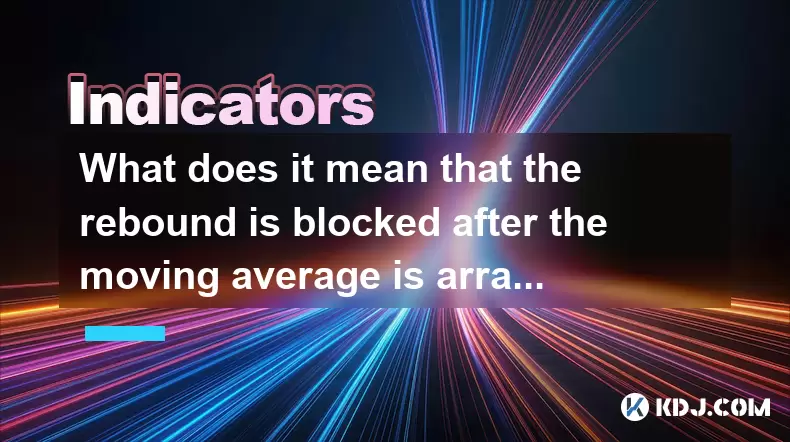
What does it mean that the rebound is blocked after the moving average is arranged in a short position for the first time?
Jul 26,2025 at 10:51am
Understanding the Short-Term Moving Average ConfigurationWhen traders refer to a 'short position arrangement' in moving averages, they are describing ...
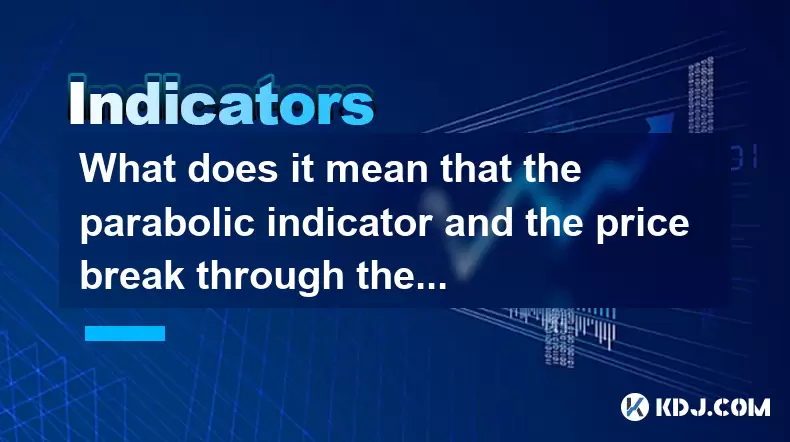
What does it mean that the parabolic indicator and the price break through the previous high at the same time?
Jul 26,2025 at 07:22pm
Understanding the Parabolic Indicator (SAR)The Parabolic SAR (Stop and Reverse) is a technical analysis tool developed by J. Welles Wilder to identify...
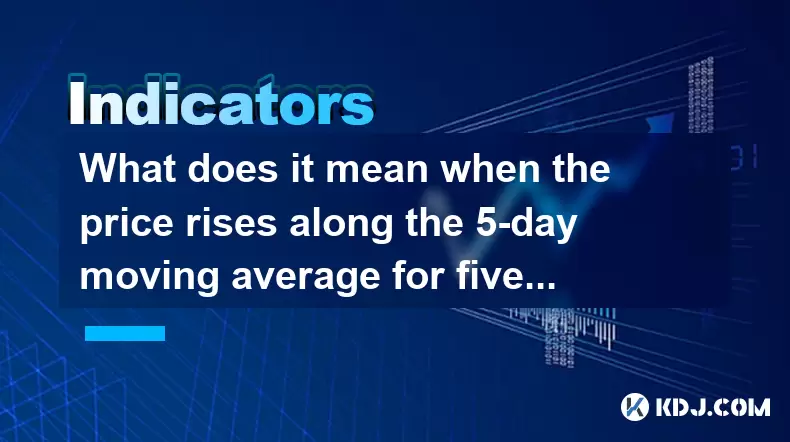
What does it mean when the price rises along the 5-day moving average for five consecutive days?
Jul 26,2025 at 08:07am
Understanding the 5-Day Moving Average in Cryptocurrency TradingThe 5-day moving average (5DMA) is a widely used technical indicator in cryptocurrency...
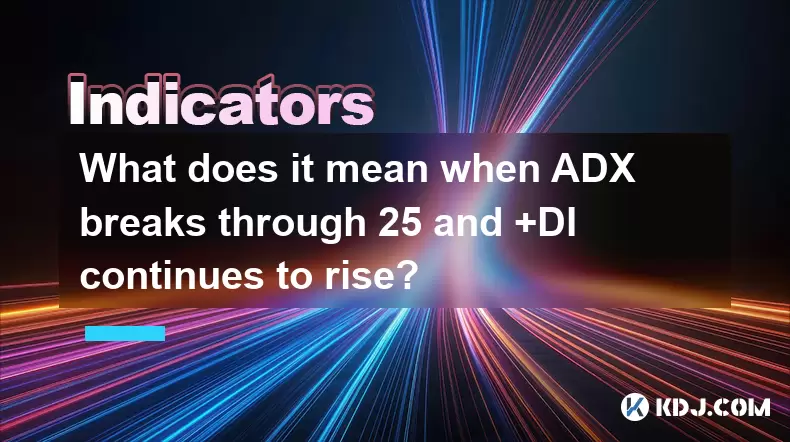
What does it mean when ADX breaks through 25 and +DI continues to rise?
Jul 26,2025 at 07:00pm
Understanding the ADX Indicator and Its ThresholdsThe Average Directional Index (ADX) is a technical analysis tool used to measure the strength of a t...
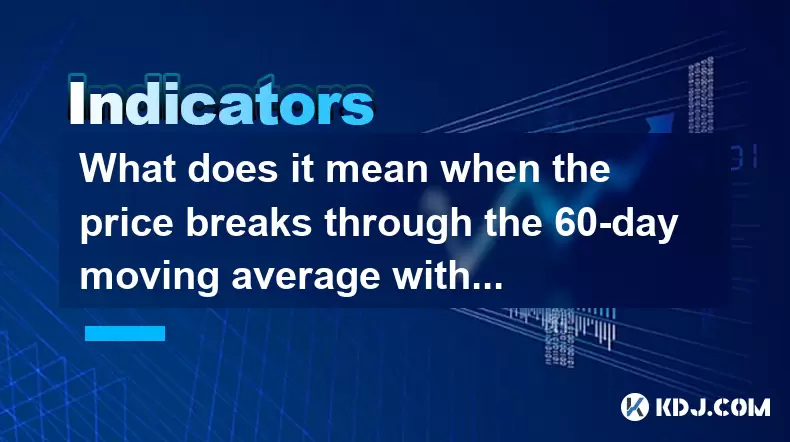
What does it mean when the price breaks through the 60-day moving average with a large volume but shrinks the next day?
Jul 26,2025 at 06:01am
Understanding the 60-Day Moving Average in Cryptocurrency TradingThe 60-day moving average (60DMA) is a widely used technical indicator in the cryptoc...
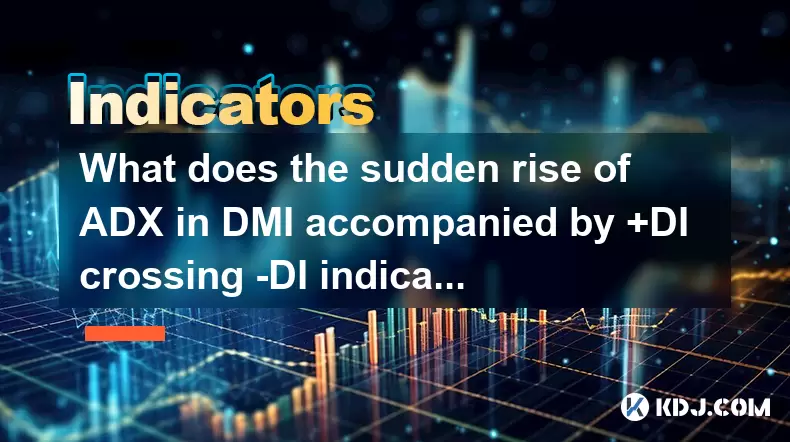
What does the sudden rise of ADX in DMI accompanied by +DI crossing -DI indicate?
Jul 26,2025 at 01:21pm
Understanding the DMI and Its Core ComponentsThe Directional Movement Index (DMI) is a technical analysis tool used to determine the presence and stre...

What does it mean that the rebound is blocked after the moving average is arranged in a short position for the first time?
Jul 26,2025 at 10:51am
Understanding the Short-Term Moving Average ConfigurationWhen traders refer to a 'short position arrangement' in moving averages, they are describing ...

What does it mean that the parabolic indicator and the price break through the previous high at the same time?
Jul 26,2025 at 07:22pm
Understanding the Parabolic Indicator (SAR)The Parabolic SAR (Stop and Reverse) is a technical analysis tool developed by J. Welles Wilder to identify...

What does it mean when the price rises along the 5-day moving average for five consecutive days?
Jul 26,2025 at 08:07am
Understanding the 5-Day Moving Average in Cryptocurrency TradingThe 5-day moving average (5DMA) is a widely used technical indicator in cryptocurrency...

What does it mean when ADX breaks through 25 and +DI continues to rise?
Jul 26,2025 at 07:00pm
Understanding the ADX Indicator and Its ThresholdsThe Average Directional Index (ADX) is a technical analysis tool used to measure the strength of a t...

What does it mean when the price breaks through the 60-day moving average with a large volume but shrinks the next day?
Jul 26,2025 at 06:01am
Understanding the 60-Day Moving Average in Cryptocurrency TradingThe 60-day moving average (60DMA) is a widely used technical indicator in the cryptoc...

What does the sudden rise of ADX in DMI accompanied by +DI crossing -DI indicate?
Jul 26,2025 at 01:21pm
Understanding the DMI and Its Core ComponentsThe Directional Movement Index (DMI) is a technical analysis tool used to determine the presence and stre...
See all articles





















